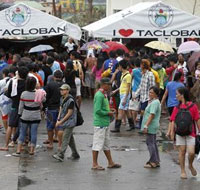12 Nov 2013 - {{hitsCtrl.values.hits}}
 A U.S. aircraft carrier set sail for the Philippines on Tuesday to accelerate relief efforts after a typhoon killed an estimated 10,000 people in one coastal city alone, with fears the toll could rise sharply as rescuers reach more isolated towns.
A U.S. aircraft carrier set sail for the Philippines on Tuesday to accelerate relief efforts after a typhoon killed an estimated 10,000 people in one coastal city alone, with fears the toll could rise sharply as rescuers reach more isolated towns.
26 Dec 2024 2 hours ago
26 Dec 2024 3 hours ago
26 Dec 2024 4 hours ago
26 Dec 2024 6 hours ago
26 Dec 2024 7 hours ago